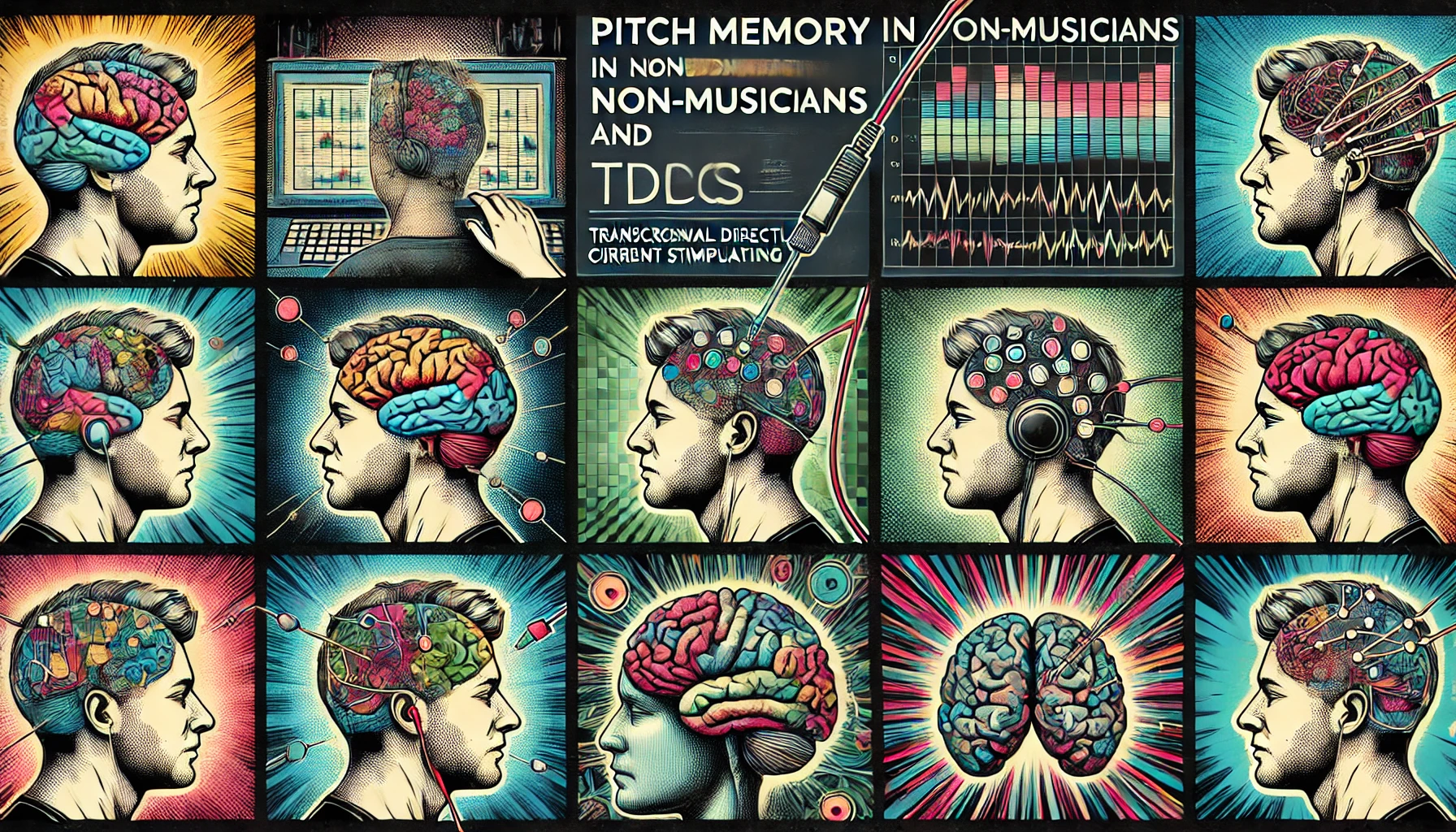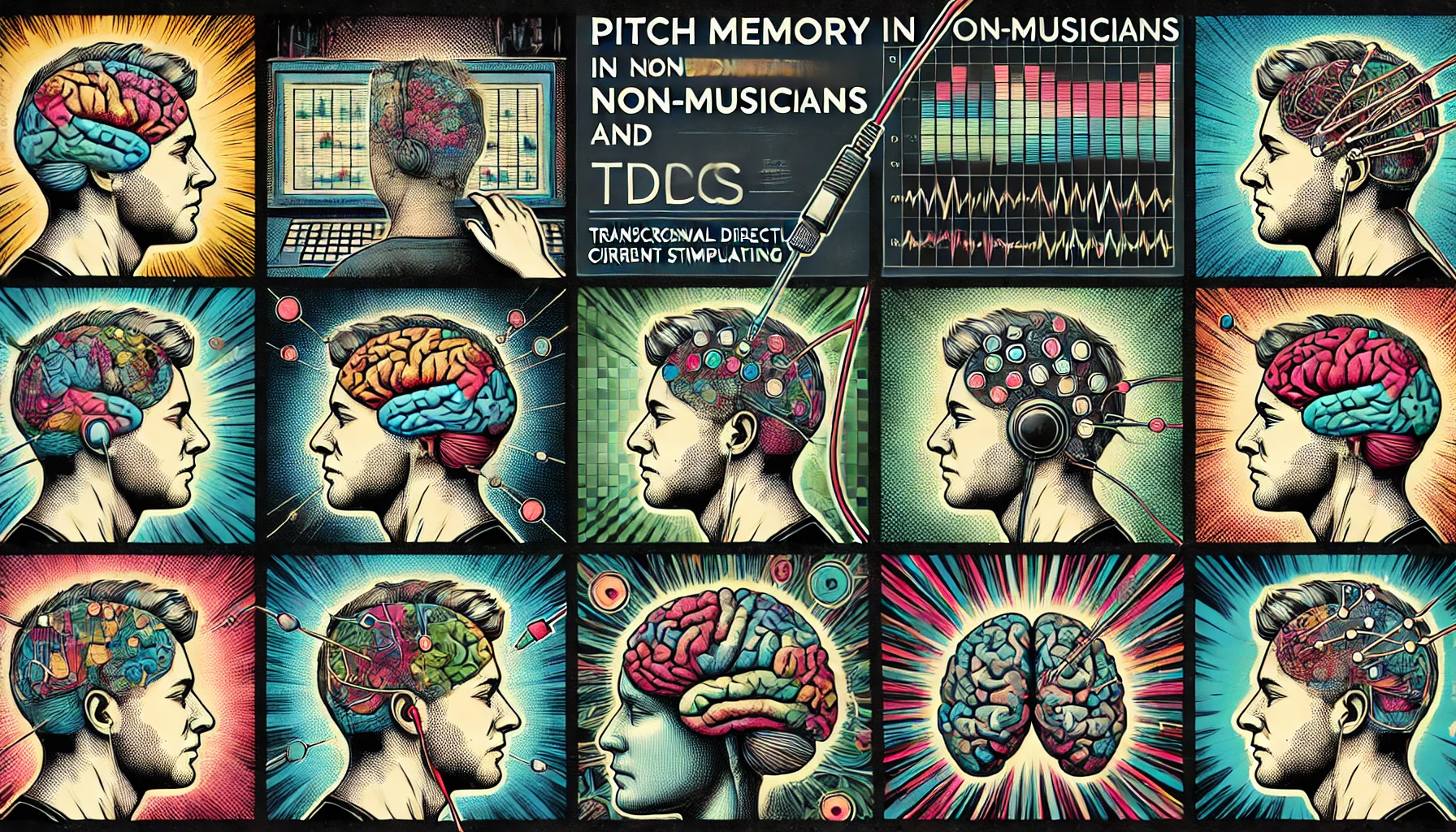Pitch Memory in Nonmusicians and Musicians
The study you’re referring to, titled “Pitch Memory in Nonmusicians and Musicians: Revealing Functional Differences Using Transcranial Direct Current Stimulation,” investigates the neural mechanisms underlying pitch memory in musicians and nonmusicians using transcranial direct current stimulation (tDCS).
Transcranial direct current stimulation is a non-invasive brain stimulation technique that involves applying a low electrical current to specific regions of the brain via electrodes placed on the scalp. This technique can modulate neuronal excitability and influence cognitive functions such as memory, attention, and learning.
In this study, researchers aimed to compare the neural correlates of pitch memory between musicians and nonmusicians using tDCS. Participants were divided into two groups: musicians, who had formal musical training, and nonmusicians, who had little to no musical training.
The researchers administered tDCS while participants performed pitch memory tasks, such as remembering and reproducing musical melodies or sequences of tones. By applying tDCS to specific brain regions implicated in pitch processing, the researchers sought to investigate how neural activity in these regions differed between musicians and nonmusicians and how it influenced pitch memory performance.
The findings of the study may provide insights into the neuroplasticity of the brain in response to musical training and the role of specific brain regions in pitch processing and memory. Understanding these functional differences could have implications for music education, cognitive rehabilitation, and the development of interventions for individuals with pitch-related deficits.
Overall, studies like this contribute to our understanding of the neural basis of musical abilities and the impact of musical training on brain function, highlighting the potential for brain stimulation techniques like tDCS to modulate cognitive processes related to music perception and memory.

Abstract
For music and language processing, memory for relative pitches is highly important. Functional imaging studies have shown activation of a complex neural system for pitch memory. One region that has been shown to be causally involved in the process for nonmusicians is the supramarginal gyrus (SMG). The present study aims at replicating this finding and at further examining the role of the SMG for pitch memory in musicians. Nonmusicians and musicians received cathodal transcranial direct current stimulation (tDCS) over the left SMG, right SMG, or sham stimulation, while completing a pitch recognition, pitch recall, and visual memory task. Cathodal tDCS over the left SMG led to a significant decrease in performance on both pitch memory tasks in nonmusicians. In musicians, cathodal stimulation over the left SMG had no effect, but stimulation over the right SMG impaired performance on the recognition task only. Furthermore, the results show a more pronounced deterioration effect for longer pitch sequences indicating that the SMG is involved in maintaining higher memory load. No stimulation effect was found in both groups on the visual control task. These findings provide evidence for a causal distinction of the left and right SMG function in musicians and nonmusicians.
Content
Pitch Memory in Nonmusicians and Musicians: Revealing Functional Differences Using Transcranial Direct Current Stimulation
N.K. Schaal1ਪ*’, V. Krause2, K. Lange1, M.J. Banissy3, V.J. Williamson4,5 and B. Pollok2
– Author Affiliations
1Department of Experimental Psychology, Heinrich-Heine-University, Düsseldorf, Germany
2Institute of Clinical Neuroscience and Medical Psychology, Medical Faculty, Heinrich-Heine-University, Düsseldorf, Germany
3Department of Psychology, Goldsmiths University of London, London, UK
4Lucerne University of Applied Sciences and Arts, Lucerne, Switzerland
5Department of Music, University of Sheffield, Sheffield, UK
http://cercor.oxfordjournals.org/content/early/2014/04/25/cercor.bhu075.abstract
The study you mentioned investigates pitch memory in nonmusicians and musicians and explores potential functional differences using transcranial direct current stimulation (tDCS). Here’s an overview of the key points and findings of this research:
1. Participants: The study likely involved two groups of participants: nonmusicians and musicians. Nonmusicians are individuals with limited or no formal musical training, while musicians are individuals who have received extensive musical training, such as playing an instrument or singing.
2. Pitch Memory Task: Participants were likely presented with a pitch memory task, where they were asked to remember and recall sequences of musical pitches. This task assesses participants’ ability to retain and reproduce pitch information in short-term memory.
3. Transcranial Direct Current Stimulation (tDCS): tDCS is a non-invasive brain stimulation technique that involves applying a weak electrical current to specific regions of the brain using electrodes placed on the scalp. In this study, tDCS was used to modulate brain activity in targeted brain regions associated with pitch memory.
4. Functional Differences: The study aimed to investigate whether there are functional differences in pitch memory between nonmusicians and musicians. Previous research suggests that musicians may have enhanced pitch processing abilities compared to nonmusicians due to their extensive training and experience.
5. Findings: The findings of the study likely revealed functional differences in pitch memory between nonmusicians and musicians. For example, musicians may have demonstrated superior pitch memory performance compared to nonmusicians, reflecting the impact of musical training on auditory memory abilities.
6. Effects of tDCS: The study likely examined the effects of tDCS on pitch memory performance in both nonmusicians and musicians. By modulating brain activity in specific regions associated with pitch processing, tDCS may have influenced participants’ ability to encode, retain, and recall pitch information.
Overall, the study provides insights into the neural mechanisms underlying pitch memory and the impact of musical training on auditory memory abilities. By revealing functional differences between nonmusicians and musicians, the research contributes to our understanding of the cognitive and neural processes involved in music perception and memory.
